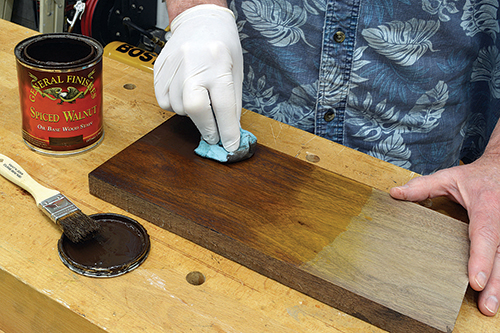
In my understanding, when you cut or plane wood, especially softwood like pine, the grains close up on the cut or planed surface due to the action of the cutting tool passing over or through them. Stain will likely be blotchy. But sanding opens the grain back up and the stain applies more evenly. Both stain and paint, however, tend to sit largely on the surface of the wood rather than penetrating to any extent. Letting stain sit for a while before whipping it off may darken the wood a bit more, but it still doesn’t penetrate all that much. You can see this when you cross cut a piece of painted or stained lumber.
But I’ve also noticed that certain “stains” penetrate deeper, e.g., a rusty water stain, or a stain I encountered caused by water running through a typewriter ribbon. Both penetrated deeply into the wood and both took both extensive sanding and chemicals to remove. Any idea why these stains penetrate deeper than solvent or other water-based stains?
Michael Dresdner: Common stains, both intentional and accidental, often contain pigments, dyes, or both, but these two coloring materials are very different.
Pigments are essentially ground up dirt, and relatively speaking, the particles are fairly large. Hence, they tend to sit on top of wood and cannot penetrate deeply into the recesses between or inside the cell structures.
Dyes, on the other hand, dissolve, which means they dissociate into molecular sized chunks. These much smaller particles are easily able to fit between the cells of the wood, and hence penetrate much deeper.
Just to give you an idea of how different these two things are, imagine that we were able to enlarge them both so that we could literally see the difference in size. If a typical dye molecule were the size of a child’s marble, a typical pigment particle would be the size of a ’55 Buick. Can you see how a dye could fit into spaces in between wood cells that a pigment cannot?





